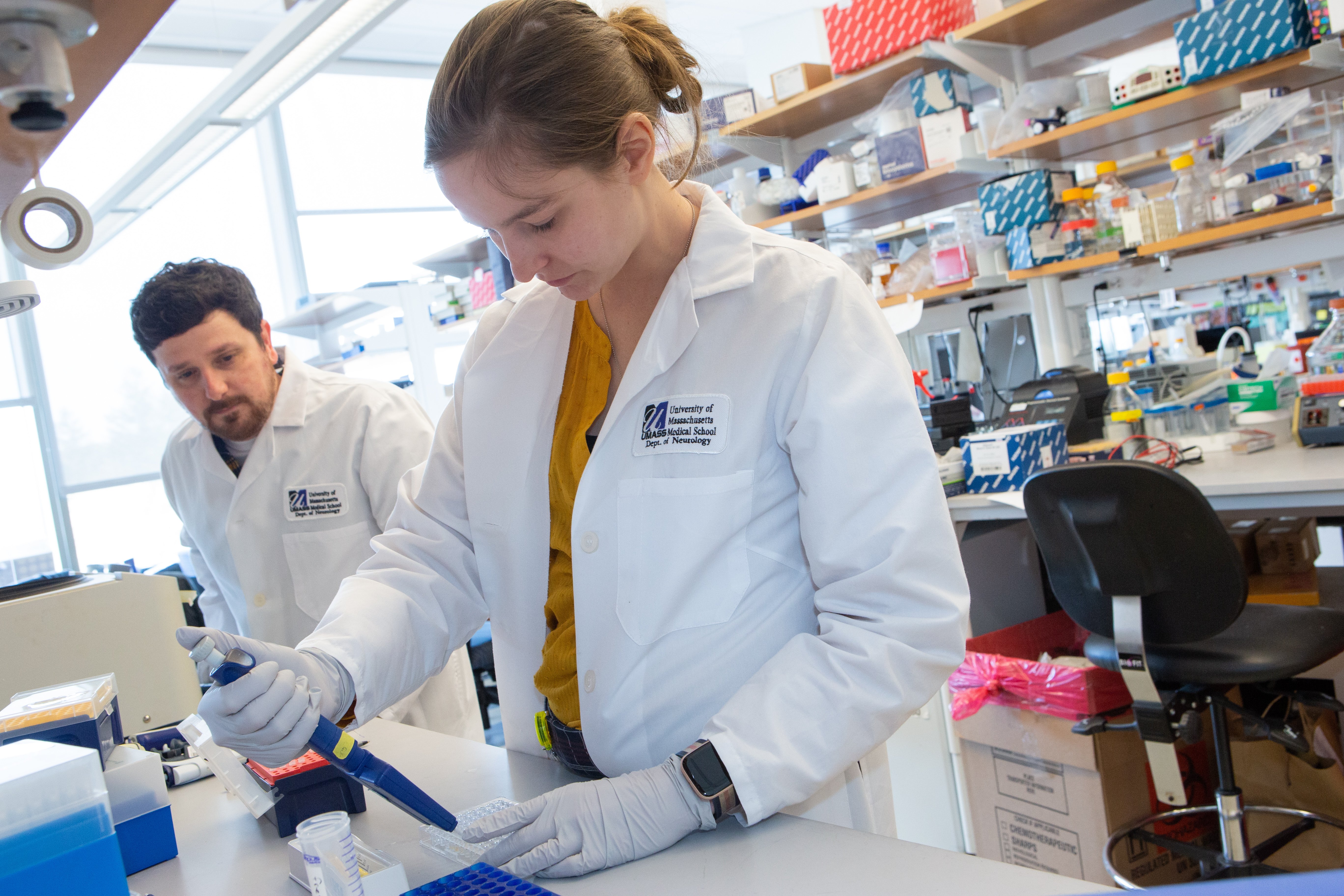Brown Lab Research

Development of new therapeutics to treat ALS depends on better understanding how the disease works. In October 2010, Brown and his team at the UMass Chan Medical School reported evidence suggesting that the SOD1 gene, which is implicated in 20 percent of inherited cases of familial ALS, also plays a part in the more common, sporadic forms of the disease. Brown’s research showed that under certain conditions and absent a mutation in the gene, a normal SOD1 protein can have the same toxic characteristics that are found in mutated forms of the gene. In select cases of sporadic ALS, these toxic proteins are present.
When he began researching ALS over 20 years ago, Brown believed that one day his work to identify the genes implicated in the inherited form of ALS would yield new insights into the more common, sporadic form of the disease. These findings are the first evidence that genes implicated in inherited ALS also play a role in the sporadic form of the disease.
Dr. Brown joined the UMass Chan Medical School as chair of neurology in May 2008, in part, because of the work of its internationally known scientists unraveling the mechanisms that turn genes on and off. UMass Chan is home to some of the world’s leading researchers in the field of RNA biology (RNA interference or “RNAi,” is a gene-silencing mechanism for which UMass Chan Professor Craig C. Mello shared the Nobel Prize in Physiology or Medicine in 2006), which Dr. Brown believes holds immense potential as a therapeutic for neurodegenerative diseases such as ALS, with its ability to create and regulate the complex patterns of gene expression. Initiated by Dr. Brown, an ALS-related arm of these efforts includes a program to silence the activity of mutant ALS genes that make the toxic proteins that trigger the disease. Working in conjunction with researchers at the Horae Gene Therapy Center at UMass Chan, Dr. Brown is accelerating efforts to devise novel gene therapies that can access the brain and spinal cord for diseases such as ALS.
Shortly after joining UMass Chan, Brown and his colleagues identified a new genetic mutation linked to ALS which is estimated to account for 5 to 10 percent of inherited cases. Discovery of this mutation, called FUS/TLS, was named one of the most cited papers from 2008 to 2010 by Thomson Reuters. Though it’s still not clear how the FUS/TLS mutation causes ALS, scientists know that the FUS/TLS protein plays a number of roles in the neuron cell. In healthy neuron cells, the FUS/TLS protein is located predominately in the cell nucleus. Samples from patients with the FUS/TLS mutation show a concentration of the FUS/TLS protein in the cytoplasm of the cell, however, outside of the nucleus. This misplaced protein is believed to contribute to cell death in neurons.
Brown has also identified disease genes in other inherited neurodegenerative and neuromuscular diseases such as hyperkalemic periodic paralysis, Miyoshi muscular dystrophy and hereditary sensory neuropathy.
Dr. Brown and his team have been very fortunate to receive support from a diversity of groups, including the locally-based organization, Angel Fund, and national partner, CVS Pharmacy, both of which have been raising money for ALS research for more than 10 years.